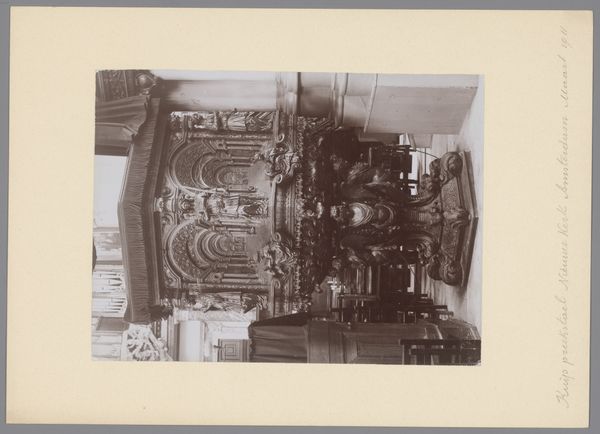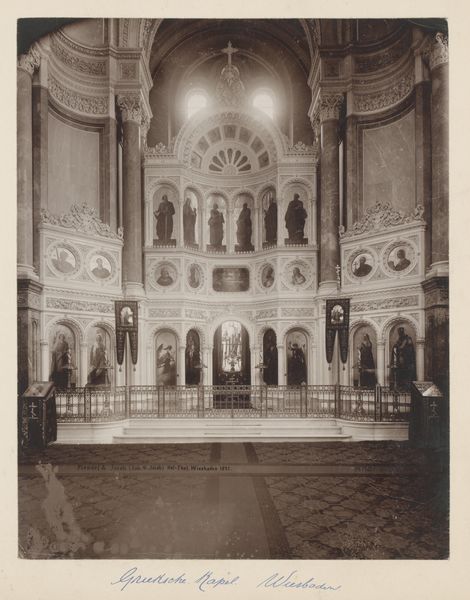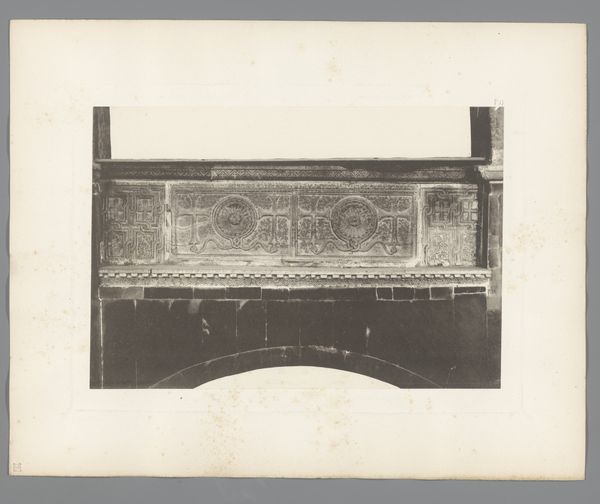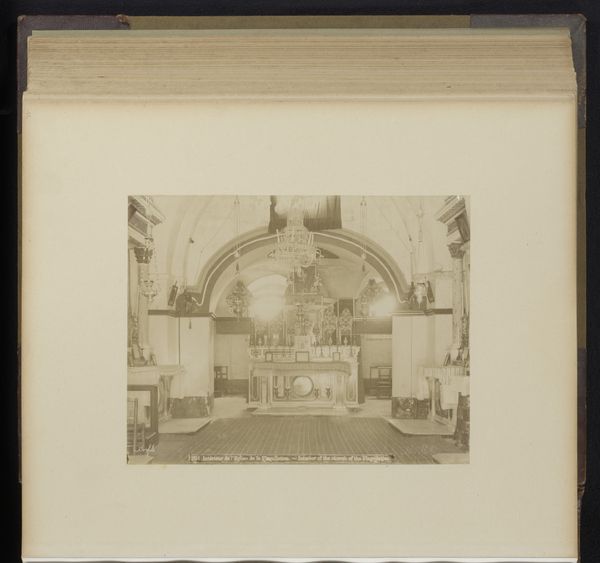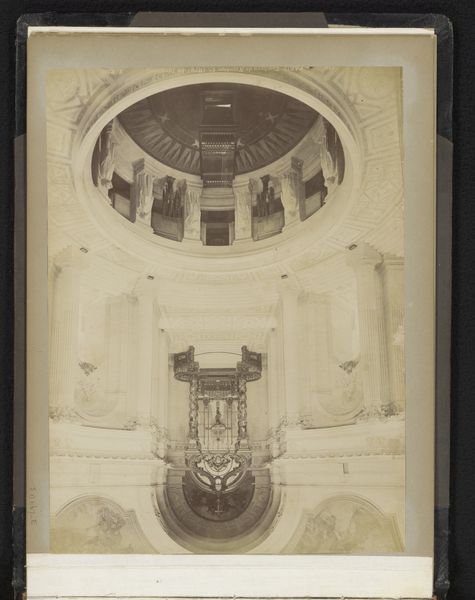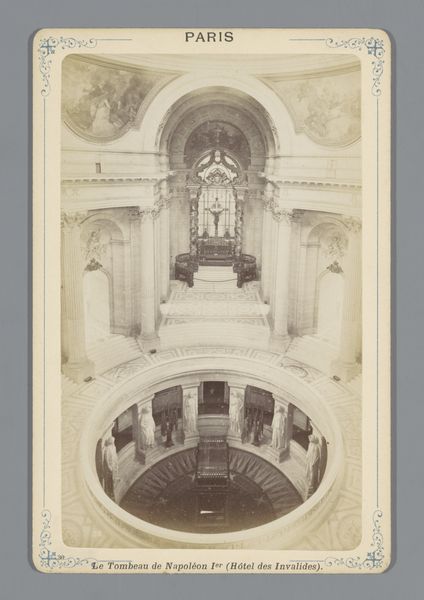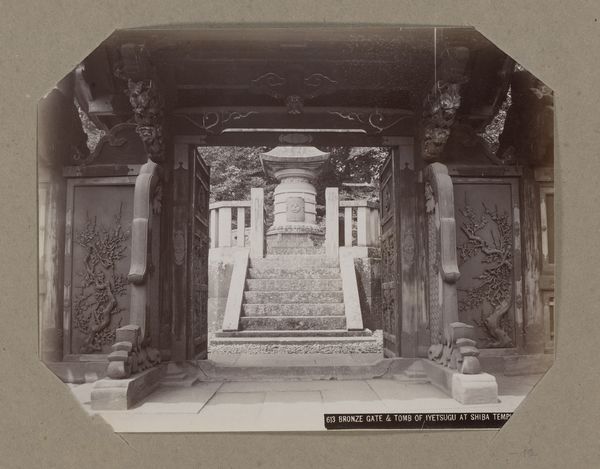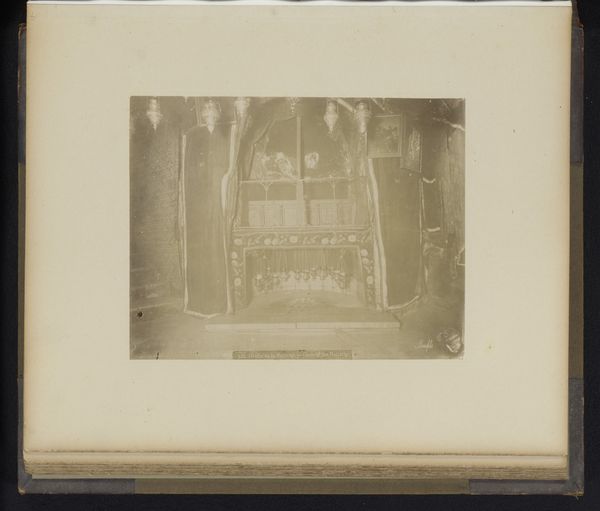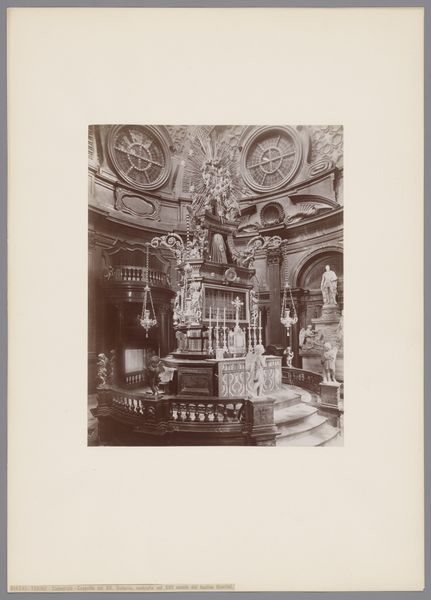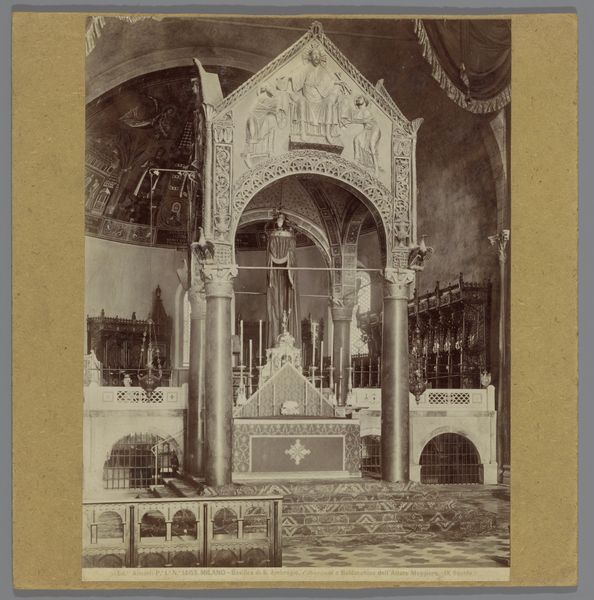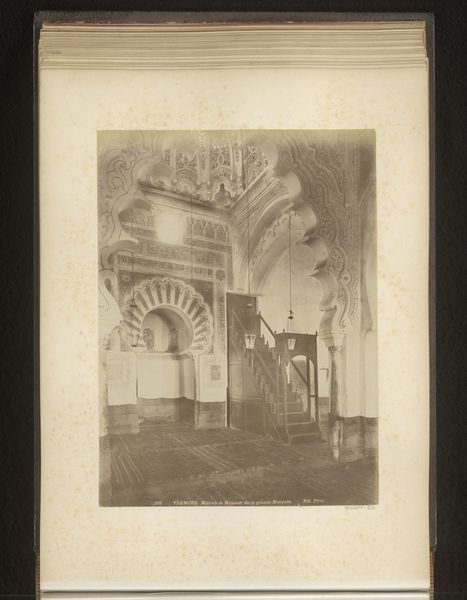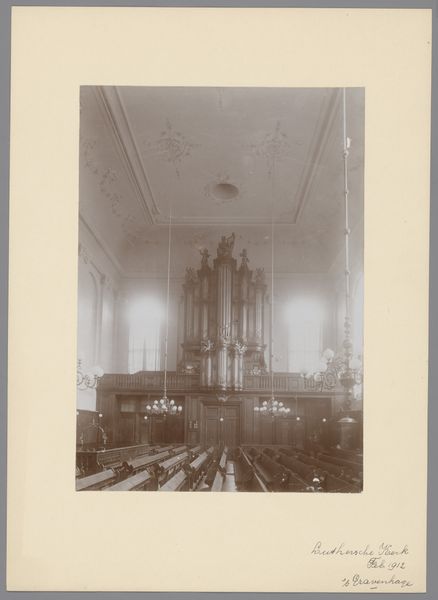
Tombe in lak in het tempelcomplex Zojo-ji in Shiba, Tokyo, Japan before 1903
0:00
0:00
photography
#
still-life-photography
#
16_19th-century
#
asian-art
#
photography
#
19th century
#
statue
#
monochrome
Dimensions: height 273 mm, width 211 mm
Copyright: Rijks Museum: Open Domain
Curator: What a photograph! We’re looking at an image entitled “Tombe in lak in het tempelcomplex Zojo-ji in Shiba, Tokyo, Japan,” captured by Kusakabe Kimbei. It’s held here at the Rijksmuseum and dates from before 1903. Editor: Immediately, I’m struck by its somber and reverent tone. The dark, monochrome palette amplifies a sense of mystery and tradition. There’s such incredible detail in the ornamentation; it almost feels overwhelming, a visual cacophony. Curator: That complexity speaks volumes about the period’s approach to death and remembrance. The elaborate lacquerwork and the multiple layers of symbolic objects arranged around the tomb tell a story of social hierarchy and spiritual devotion during the late 19th century in Japan. Think about how this imagery might be intertwined with the socio-political climate following the Meiji Restoration, with shifting power dynamics and the renegotiation of tradition. Editor: Yes, these types of monuments also hold deep cultural symbolism tied to ancestry. I can make out stylized motifs and what seems to be representations of guardians or ancestral figures rendered within the lacquer. Lacquer itself is no accident. What were the traditional qualities of lacquer associated with royalty and death? Curator: Indeed, lacquer has long symbolized preservation and reverence. I find myself thinking about how photography, as a relatively new medium, served to document and disseminate these traditional displays of power and mourning during a period of intense cultural transformation. How might that have reshaped perceptions of death rituals across social classes? Editor: This photographic style gives the tomb a sort of iconographic status. By reducing color to monochrome and arranging elements in this manner, Kusakabe presents an unchanging idea about the subject, immortalizing it through artistic means. What does that decision about immortalization tell us about what 19th-century Japanese people feared to lose? Curator: It raises crucial questions about the collision of modernity and deeply entrenched customs, challenging our understandings of national identity and how societies grapple with mortality during times of rapid change. A fascinating study in preserving memory through artistic intervention, certainly. Editor: Agreed, this piece urges us to look beneath the ornate surface to decode the anxieties and aspirations encoded within these powerful, lasting symbols.
Comments
No comments
Be the first to comment and join the conversation on the ultimate creative platform.
